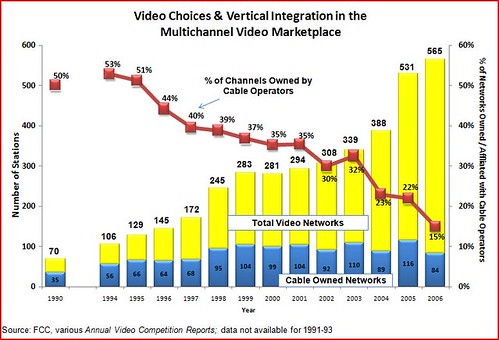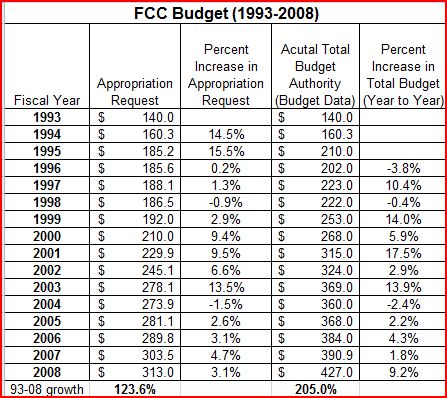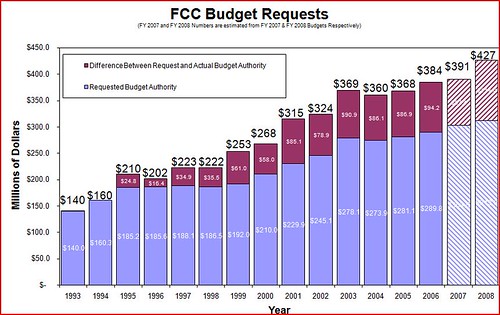Art Brodsky’s 4,789-word article about Connect Kentucky and its offspring Connected Nation has been the talk of telecom circles over the past week.
Connected Nation is a non-profit entity that has become one of biggest players in the currently topical field of broadband data. Using their work in Kentucky as a model for mapping out broadband availability nation-wide, the group has become a driving force behind legislation that would provide grants for other states to duplicate these efforts.
Examples of legislation following the Connect Kentucky model are the Senate version of the current farm bill, H.R. 4212, which includes Illinois Democratic Sen. Richard Durbin’s “Connect the Nation Act,” S. 1190. Durbin’s bill would authorize $40 million a year, for five years, to state efforts to map out broadband inventory on the census block level.
The “Broadband Data Improvement Act,” S. 1492, by Senate Commerce Committee Chairman Daniel Inouye, D-Hawaii, takes a similar approach. The goal is, in the identical language of both bills, to “identify and track the availability and adoption of broadband services within each State.”
Continue reading →
“Cable-TV Industry Girds for New Threats.” That’s the title of an article today from Ben Charny of the Wall Street Journal, who is reporting on what he’s seeing at this year’s Consumer Electronics Show in Las Vegas and how it is upending the traditional TV market:
“[A]s evidenced this week by the Consumer Electronics Show in Las Vegas… thanks to the Internet becoming a bigger distributor of entertainment, and new gadgets and other developments that make it easier to show the Internet’s content on TVs. … As the Internet becomes a larger provider of video, and technology makers ease the flow of that content to television sets, it threatens the cable and satellite industries. Currently, the number of subscriber dropouts remains relatively small, according to cable and satellite operators, but anecdotal evidence suggests those affected by a souring U.S. economy are more inclined to keep their less-expensive Internet services than their cable-TV subscriptions.
FCC Chairman Kevin Martin was out at the show this week, too. Hopefully he was watching and listening so his outrageous regulatory “war on cable” can finally come to an end.
I’ve been trying to keep tabs on the status of various municipal wi-fi experiments going on across the nation by posting local news reports about them whenever I see them. The results so far have not been encouraging, but this hasn’t been that surprising since those of us who study these issues know that most wireline muni experiments failed too.
And speaking of failed wireline experiments, it appears there’s another one that might soon be added to the list. The Utah Telecommunications Open Infrastructure Agency–or “UTOPIA” as it is known–was created in 2002 by local Utah officials who wanted to bring high-speed Internet access to their communities. Eleven communities pledged roughly $200 million over 20 years to back the bonds needed to finance the construction of advanced fiber-optic facilities. Utilimately, the goal was to ensure inexpensive broadband for the masses at minimal cost to taxpayers.
But there are problems in paradise. According to this recent article by Steve Oberbeck of The Salt Lake Tribune:
[F]our years after 11 Utah cities… pledged to financially back the UTOPIA system, its finances are in shambles. Construction is behind schedule. Its top promoters have quit, and its newest chairman has uttered the unthinkable – that despite promises to the contrary, the cities that pledged their support eventually may have to pony up hundreds of millions in taxpayer dollars to prop up the system.
What went wrong?
Continue reading →
The Wall Street Journal today nailed FCC Chairman Kevin Martin today for yesterday’s two-step on ownership, easing ownership rules on newspapers, but imposing new ones on cable. The WSJ’s conclusion:
“Mr. Martin’s animus toward the cable business is by now a matter of public record, and yesterday’s action can only be understood as part of his personal campaign to make the industry’s life as hard as possible. The D.C. Circuit is almost certain to strike down this rule, as it did the last time. But by then there may be a fresh face as FCC Chairman, and the only winners will be the lawyers who billed the hours”.
Worth reading.
Rep. John D. Dingell (D-MI), the House Energy & Commerce committee chairman, is complaining that the FCC isn’t fair, open or transparent. Exasperated political partisans frequently complain about process out of frustration when there is insufficient popular support for their point of view to prevail on the merits. That’s what’s happening here.
Overlooking the many unfortunate attempts lately to re-regulate the cable industry and a few other lapses, the FCC has been extraordinarily successful in terms of removing unnecessary regulation, and Martin deserves much of the credit. In the telecom space, network operators Verizon and AT&T are investing billions upgrading their networks to provide competitive video services as a result of the fact the Bush FCC allowed the Regional Bell Operating Companies into the long-distance market, deregulated last-mile fiber facilities, put DSL and cable modem services on the same deregulatory footing and prohibited cable franchising authorities from unreasonably refusing to award competitive franchises for the provision of cable services. As AT&T and Verizon attempt to capture video market share, the cable operators are ramping up their investment in competitive voice services.
Continue reading →
The FCC has settled on an inappropriate definition of what constitutes a competitive market. A memorandum explaining why the FCC denied the Verizon’s forbearance petition seeking deregulation in Boston, New York, Philadelphia, Pittsburgh, Providence and Virginia Beach suggested it’s because Verizon’s market share has to be less than 50% AND Verizon’s competitors must have ubiquitous overlapping networks with significant excess capacity.
While there is some evidence in the record here regarding cable operators’ competitive facilities deployment used in the provision of mass market telephone service in the 6 MSAs at issue, we find that it does not approach the extensive evidence of competitive networks with significant excess capacity relied upon in the AT&T Nondominance Orders … where the Commission has found an incumbent carrier to be nondominant in the provision of access services, it had a retail market share of less than 50 percent and faced significant facilities-based competition. (footnote omitted)
A market share in excess of 50% would justify regulation in the EU, but not in the U.S. pursuant to settled antitrust principles.
Continue reading →
One of the very few positive things in the Telecommunication Act of 1996 is Section 401 (codified as Sec. 10 of the Communications Act of 1934, as amended), which requires the Federal Communications Commission to forbear from applying unnecessary regulation to telecommunications carriers or services.
Congress tucked the provision into the 1996 act to improve the chances that pro-competition regulation would be eliminated once fully implemented and no longer necessary to ensure competition.
On Friday the FCC issued a notice of proposed rulemaking requesting public comment on whether the forbearance procedure needs more procedure. Commissioner Michael J. Copps issued a statement indicating dissatisfaction with the whole forbearance concept:
Too often forbearance has resulted in industry driving the FCC’s agenda rather than the reverse being true. Decisions are based upon records lacking in data and the Commission faces a statutory deadline that requires a decision with or without such data. Perhaps most egregious is the fact that if the Commission fails to act, forbearance petitions may go into effect based upon the industry’s reasoning rather than the Commission’s own determination. All of this is to say that I do not believe that forbearance is being used today in the manner intended by Congress.
I admire Commissioner Copps’ confidence that he knows what Congress intended, but I actually sat on the Senate floor when the Telecommunications Act of 1996 was debated and the forbearance provision (which originated in the Senate) wasn’t debated at all. It was included in the committee mark, which was supported by Commissioner Copps’ old boss, the committee’s ranking member and former chairman, Senator Ernest Hollings (D-SC).
Continue reading →
The big news this week in communications policy circles was the hullabaloo at the FCC over cable regulation. FCC Chairman Kevin Martin suffered a major setback in his attempt expand regulation of the video marketplace when he failed to get the votes he needed to impose new mandates on cable TV operators. Specifically, Chairman Martin was seeking to breath new life into an arcane provision of a 1984 law–the so-called “70/70” rule–that would have given him much greater regulatory authority over the day-to-day dealings of the cable market.
But the war certainly isn’t over. The day after losing that skirmish, Chairman Martin made it clear he would be pursuing other forms of regulation for the cable sector, including an arbitrary 30% ownership cap on the reach of any cable operator. And the Chairman’s crusade for a la carte mandates on cable will no doubt continue since it has been on his regulatory wish list for some time now, and many other groups support his efforts.
These cable TV regulatory proposals have always been fueled by the same two arguments: (1) cable TV operators have a stranglehold on market entry by new video providers and, (2) because of that, media diversity has suffered. For example, the New York Times editorial board opined this week that: “Twenty-five years ago, cable carriers promised to provide consumers with a wealth of new programming options. Today, the carriers and their packages of unwanted channels are obstacles to choice.” This is the same logic that animates Chairman Martin’s crusade against cable and the efforts of his pro-regulatory allies, most of whom are radical Leftist media critics.
But that logic is dead wrong.

Continue reading →
As I mentioned yesterday, James Gattuso and I penned an editorial for National Review this week about the growth of FCC regulation and spending in recent years. In the op-ed, we also noted that, “For whatever reason, a disproportionate number of these [new regulatory proposals] have been aimed at cable television, so much so that press and industry analysts now speak of Chairman Martin’s ongoing ‘war on cable.'”
Today, the editors at National Review have chimed in with an editorial of their own on the issue entitled, “Pulling the Cable on Martin’s Crusade.” Specifically, the editors address what most pundits believe really motivates the Chairman’s crusade against cable: His desire to force cable companies to offer consumers channels on “a la carte” basis in an effort to “clean up” cable TV. “Martin should abandon this particular crusade,” the NR editors argue. “While we are sympathetic to parents’ desire to get the channels they want without having to buy access to racier fare, using economic regulation to restructure an industry is the wrong approach.” They continue:
Continue reading →
This is just a quick follow-up to the post I made earlier in which I mentioned the new editorial James Gattuso and I penned for National Review about the growth of FCC regulation and spending in recent years. A few people asked me where we got the numbers we used in the piece regarding the growth of the FCC’s budget over time. Here are the relevant numbers and a graph charting that growth. The numbers can all be found in the the FCC’s annual budget reports.
Next time some pro-regulatory advocate says that the agency is engaged in “radical deregulation” or something absurd like that, show them these numbers. There’s still a whole lotta regulatin’ going on over there!






 The Technology Liberation Front is the tech policy blog dedicated to keeping politicians' hands off the 'net and everything else related to technology.
The Technology Liberation Front is the tech policy blog dedicated to keeping politicians' hands off the 'net and everything else related to technology.